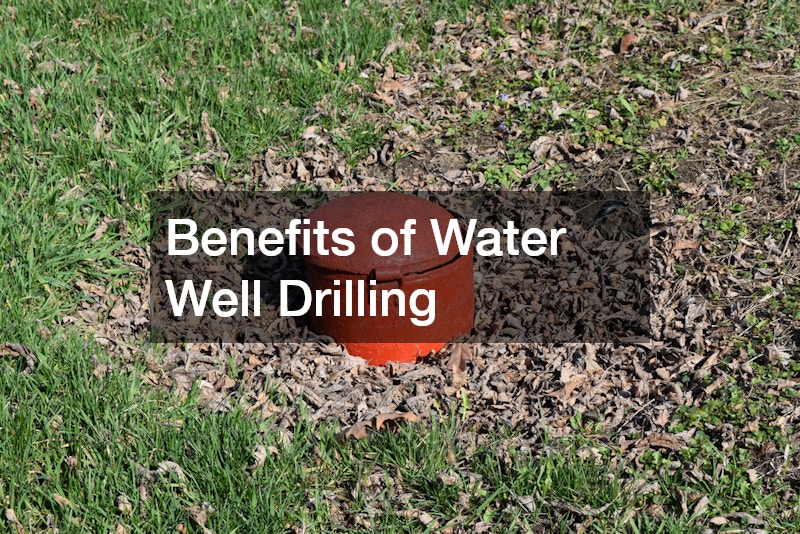What You Need to Know About Water Well Drilling
Water well drilling is a critical process for accessing underground water resources, essential for domestic, agricultural, and industrial use. It involves the construction of a well that is drilled, bored, dug, or driven into the ground to access groundwater in underground aquifers. With growing concerns about water scarcity and sustainability, understanding water well drilling can help ensure efficient and eco-friendly management of this precious resource.
Introduction to Water Well Drilling
Water well drilling is not just a simple task of digging a hole in the ground. It is a sophisticated operation that requires understanding the geological layers of the earth and the availability of groundwater. The process begins with a site assessment, where hydrogeologists study the area’s geological features to determine the best location for a well. They examine soil composition, rock formations, and water tables to ensure the drill site will yield a sustainable supply of water. This in-depth analysis is crucial because drilling without proper assessment can lead to dry wells or even environmental damage.
Once the preliminary assessments are complete, the drilling process begins. Specialized equipment is needed to bore through the earth’s layers, which can be rocky, soft, or a combination of both. Drilling machines use sharp, durable drill bits to penetrate these surfaces, reaching the aquifer where groundwater is stored. Each layer requires different drilling techniques, and operators must adjust equipment accordingly to maintain efficiency and safety throughout the process. This technical aspect is why hiring experienced and professional drillers is paramount.
After reaching the desired depth, the well construction phase begins, which includes casing the well. Casing is necessary to prevent the walls of the well from collapsing and to protect the water from contaminants. This step involves installing a series of pipes that seal off the well from external impurities such as dirt, chemicals, and other contaminants. Once the casing is in place, the well is sealed at the surface, and a pump is installed to draw water to the surface. This phase is crucial as it ensures the longevity and health of the water supply for years to come.
Challenges in Water Well Drilling
One of the primary challenges in water well drilling is environmental impact. Drilling can disrupt the natural landscape, affecting local flora and fauna. Moreover, improper drilling or maintenance can lead to contamination of the groundwater supply, causing significant environmental harm. To mitigate these risks, drilling must adhere to strict regulatory standards and guidelines aimed at protecting the environment and the water source. Additionally, new techniques such as horizontal drilling are being developed to minimize surface disturbances.
Technical difficulties present another challenge, such as dealing with unexpected geological conditions. Drillers may encounter hard rock layers or pockets of gases that were not detected during initial assessments. These unforeseen conditions require quick thinking and adaptability to ensure the drilling process proceeds smoothly and safely. Drilling technologies are continually evolving to overcome these challenges, making the process more efficient and less prone to unexpected delays.
Furthermore, water well drilling can be financially challenging. The cost of drilling varies widely depending on factors like location, depth, and the type of rock encountered. Equipment and labor costs can add up, making it a significant investment for property owners. It’s essential to balance cost considerations with the need for professional services to ensure a long-lasting, efficient supply of clean water. Investing in quality drilling services often pays off in providing a sustainable water source.
Benefits of Water Well Drilling
Despite the challenges, water well drilling offers numerous benefits. For one, it provides a reliable source of water independent of municipal supplies. In regions where water scarcity or infrastructure is a concern, having a private well ensures a steady water availability for daily needs and irrigation. Moreover, it empowers users to manage their water resources, often leading to more efficient and conservation-minded usage of water.
Another advantage is cost savings. While the initial investment for drilling a well can be high, over time, it often proves more economical than relying on paid water supplies. Property owners with wells often see reduced water bills, especially in areas prone to usage restrictions or rate increases. Furthermore, well water can sometimes be of higher quality, free of the chemicals and treatment often associated with municipal water supplies.
Finally, water well drilling contributes to increased property value. Properties with their own water source are attractive to potential buyers, offering both a practical resource and the peace of mind that comes with it. Whether for residential, agricultural, or industrial properties, having a dedicated water well enhances the overall value. This long-term investment not only provides immediate benefits but also adds to the property’s appeal and marketability.


